Are you looking to expand your content's reach and engage a wider audience? A content syndication agreement can be your key to sharing valuable information across various platforms while maintaining your brand's integrity. By formalizing this partnership, you ensure proper credit, rights, and distribution methods that benefit both parties. So, if you want to learn more about crafting a solid content syndication agreement, keep reading!

Parties Involved
A Content Syndication Agreement typically outlines the collaboration between two entities, each defined as a party. The parties may include corporations, individuals, or organizations involved in the distribution of digital content. One party may be a content creator or publisher, such as a blog, news site, or video platform, while the other party could be a media outlet, distributor, or aggregation platform seeking to share and promote that content. Key details may include the legal names of the involved entities, their registered addresses, and any relevant business identifiers such as Corporate Identification Numbers (CIN). Notably, terms should clearly define the rights, obligations, and expectations of each party to ensure a mutually beneficial arrangement.
Content Usage Rights
Content syndication agreements establish the terms under which content, such as articles or videos, can be reused by different platforms or websites. These agreements should clearly define content ownership, usage rights, geographical restrictions, duration of usage, and payment terms. For instance, a publisher might grant a news agency permission to repost articles on their website for a maximum period of one year, while also specifying that the agency must provide proper attribution. Furthermore, any modifications to the content, such as editing or altering the format, should be clarified within the agreement to avoid misunderstandings. Negotiating these terms is crucial for maintaining the integrity of the original work and ensuring that all parties understand their rights and obligations.
Distribution Channels
A content syndication agreement outlines the distribution channels for sharing media assets, such as blogs, articles, or videos. Key entities like partners, platforms, and websites define the reach of the content. High-traffic sites like Medium or LinkedIn can amplify visibility, while niche websites may provide targeted audience engagement. Distribution strategies include email newsletters, social media platforms such as Facebook and Twitter, and content aggregators. Tracking metrics, including user engagement, click-through rates, and audience demographics, is vital for measuring success. Legal considerations, including copyright ownership and attribution guidelines, ensure compliance and protect intellectual property rights throughout the syndication process.
Payment Terms
A content syndication agreement outlines the financial arrangements for the distribution of content across multiple platforms. Payment terms specify the compensation structure, including frequencies and methods of payment. For example, a standard agreement may stipulate a monthly fee of $2,000 for exclusive rights to the content, contingent upon the implementation of a minimum distribution clause, such as 50,000 impressions across partner sites. Additionally, terms could include performance-related bonuses, like an additional $500 for exceeding 100,000 views within the first month. Clarity on payment methods, such as direct bank transfers or checks, and the invoicing process must be detailed, ensuring timely and transparent transactions that align with industry standards.
Termination Clause
The termination clause in a content syndication agreement outlines the conditions under which either party may terminate the agreement. Notice requirement typically stipulates either party must provide written notice (usually 30 days) to the other party. Breach of contract signifies immediate termination if either party fails to uphold their obligations. In instances of force majeure events, which include natural disasters or significant disruptions, either party may suspend terms without penalty. Termination for convenience allows either party to end the agreement without cause after the notice period. Upon termination, rights to the content revert to the original creator, while existing obligations (like payment for services rendered) remain enforceable.

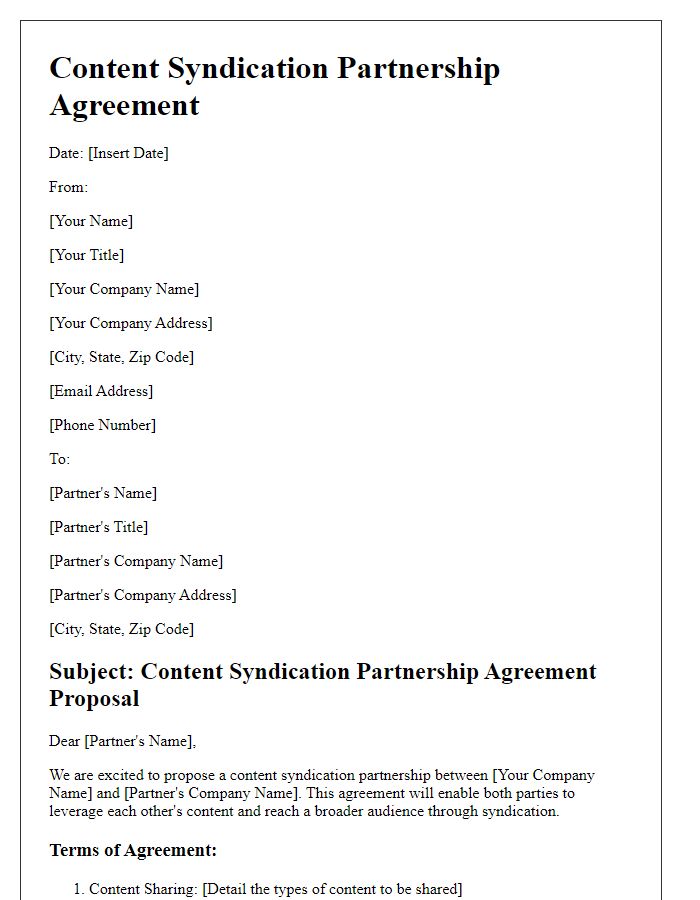
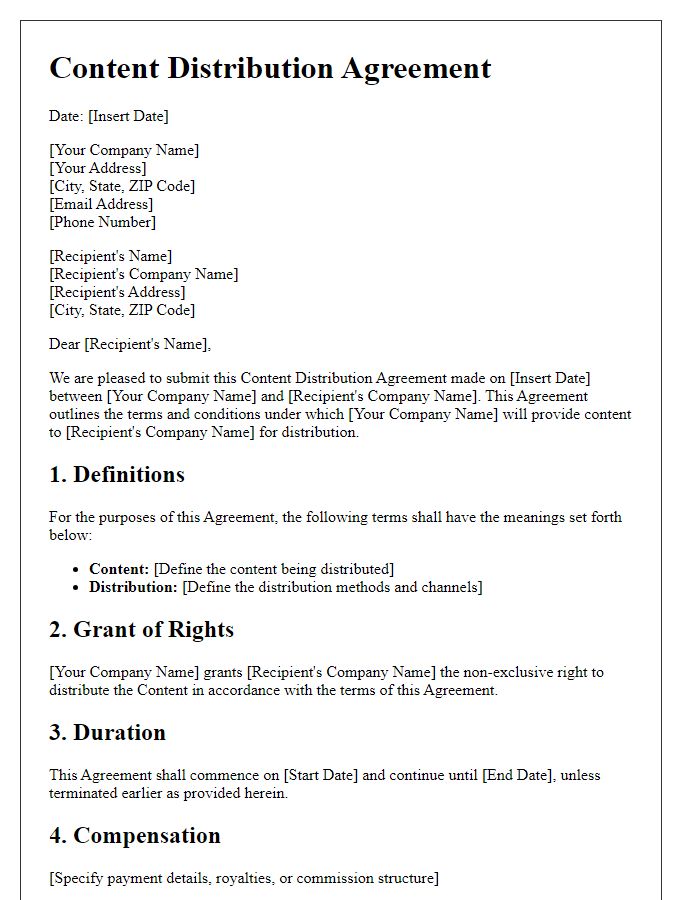
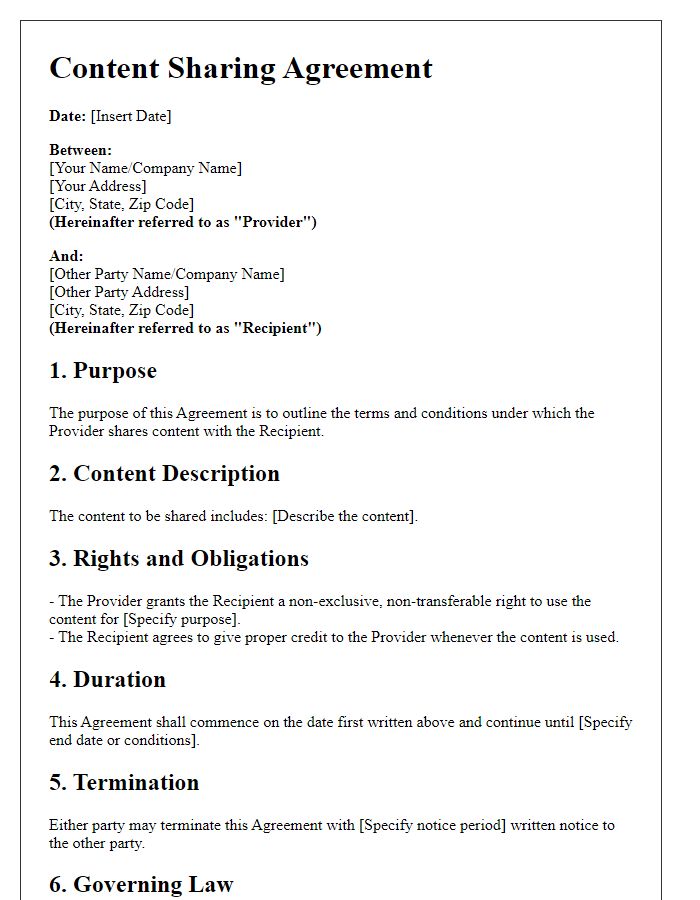
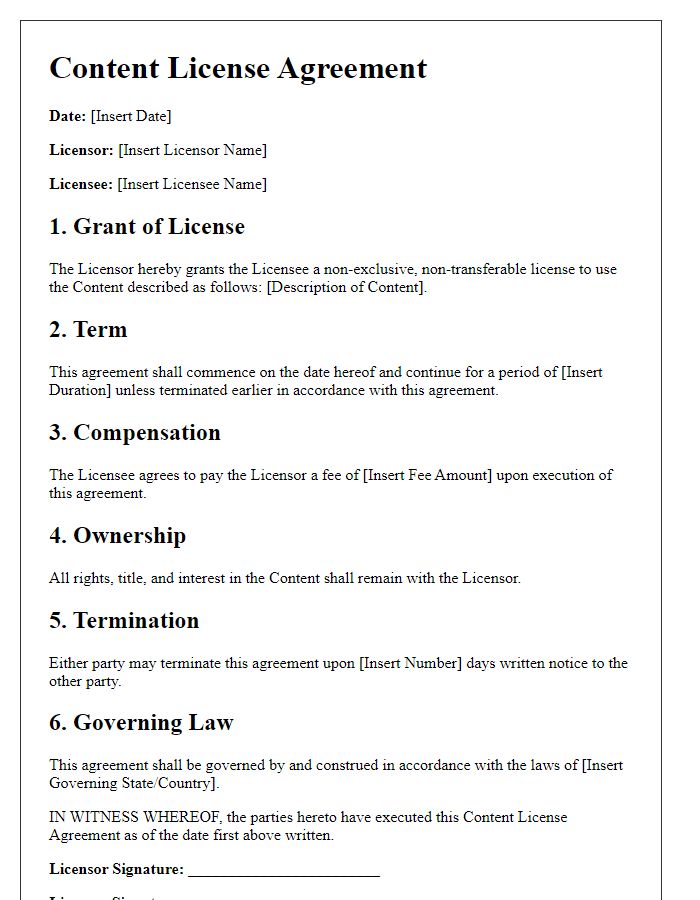
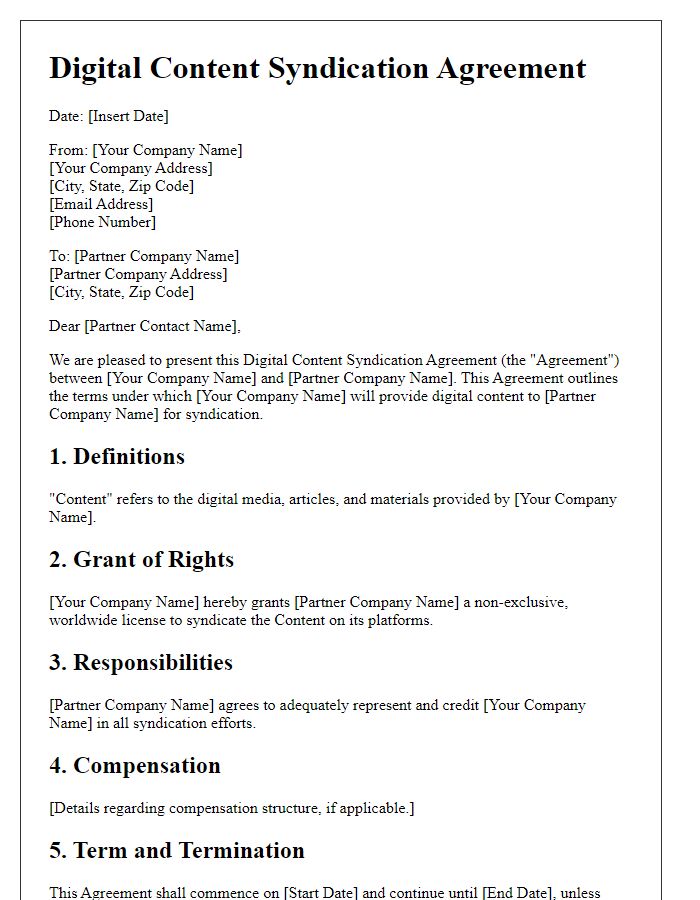
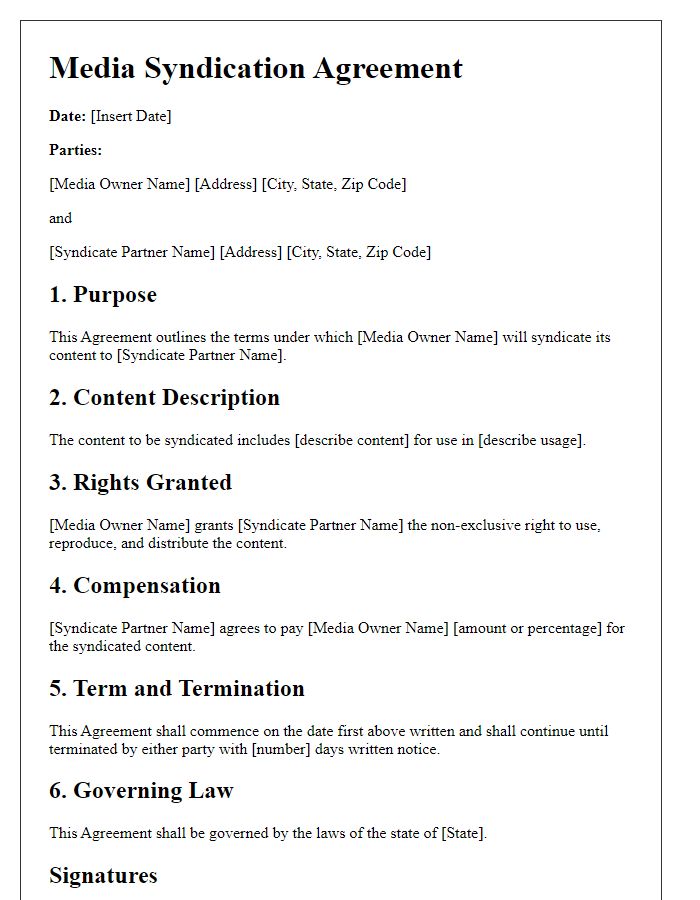
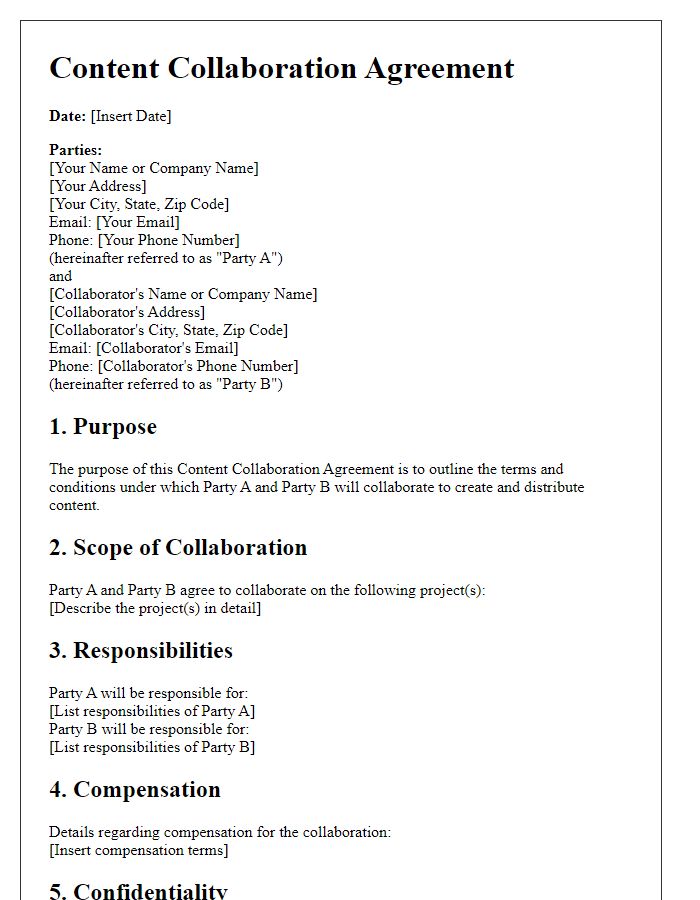
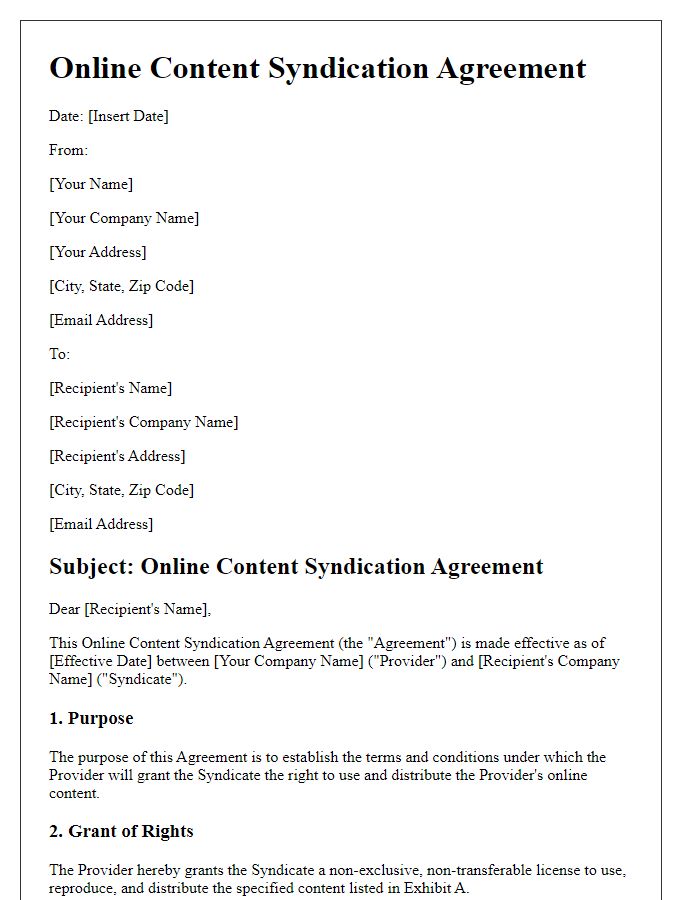
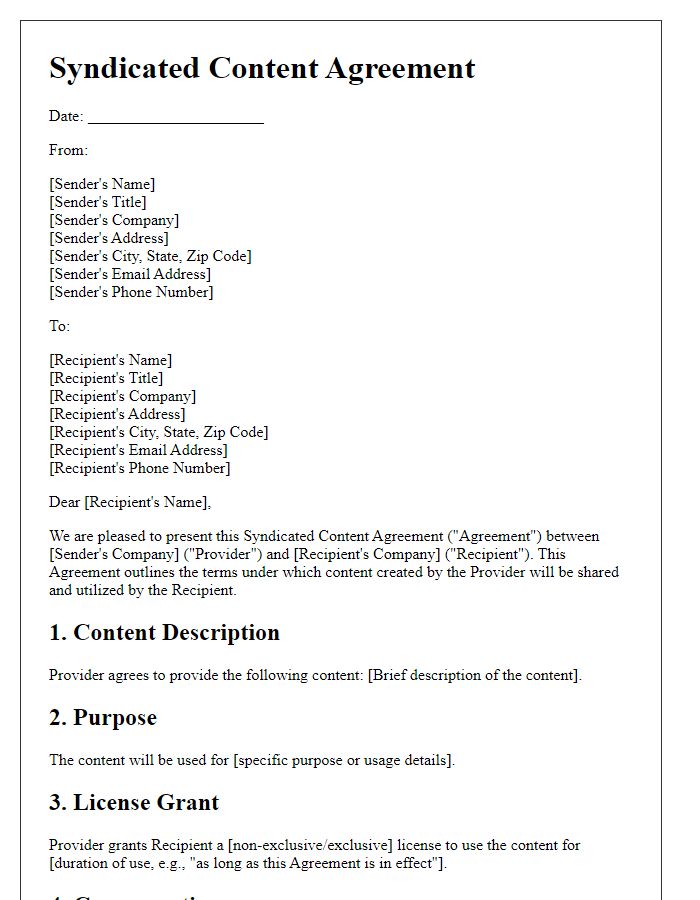
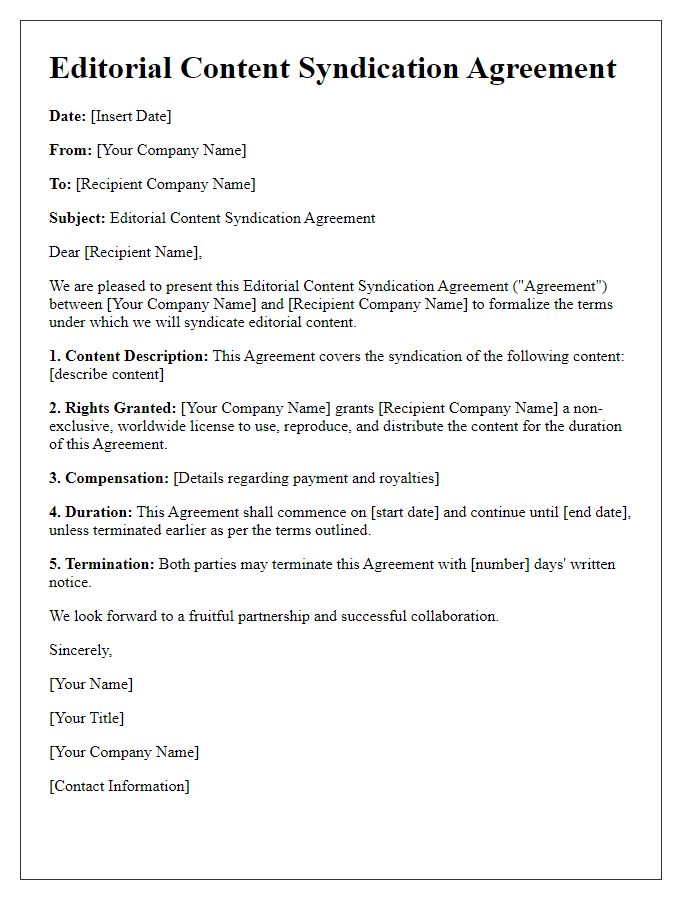


Comments